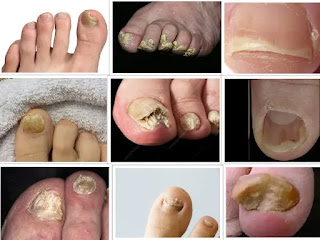When it comes to treating fungal infections in toenails, the goal is to eliminate the infection and prevent it from spreading to other nails or parts of the body. Treatment options may vary depending on the severity of the infection and the overall health of the individual.
Here are some common treatment options for fungal infections in toenails:
Topical Medications
Topical antifungal medications are often the first line of treatment for mild to moderate cases of toenail fungus. These medications come in the form of creams, ointments, and nail lacquers that are applied directly to the affected nail. It is important to follow the instructions for use carefully, as some medications may need to be applied for several weeks or months to be effective.
Oral Medications
For more severe cases of toenail fungus, oral antifungal medications may be prescribed. These medications are taken by mouth and work from the inside out to eliminate the infection. Oral medications may need to be taken for several months and can have side effects, so it is important to discuss the risks and benefits with your healthcare provider before starting treatment.
Surgical Treatment
In rare cases, surgical treatment may be necessary to remove the infected toenail. This is typically only recommended for severe cases of toenail fungus that have not responded to other treatments.
It is important to note that toenail fungus can be difficult to treat, and it may take several months for the infection to clear up completely. It is also possible for the infection to return, especially if proper foot hygiene is not maintained.
To prevent recurrence of toenail fungus, it is important to follow good foot hygiene practices, such as keeping your feet clean and dry, wearing shoes and socks that allow your feet to breathe, and avoiding walking barefoot in public places. You should also avoid sharing nail clippers or other personal items that may spread infection.
If you are experiencing symptoms of a fungal infection in your toenails, contact your healthcare provider for a proper diagnosis and treatment plan.
Home Remedies
In addition to medical treatments, there are also some home remedies that may help to alleviate the symptoms of toenail fungus. These remedies are not proven to cure the infection, but they may be helpful in conjunction with other treatments.
Some common home remedies for toenail fungus include:
- Applying tea tree oil or oregano oil to the affected nail
- Soaking the affected foot in a solution of water and vinegar
- Applying Vick's VapoRub to the affected nail
- Using a mixture of baking soda and hydrogen peroxide to create a paste that can be applied to the nail
It is important to note that these remedies have not been scientifically proven to cure toenail fungus, and they should not be used as a substitute for medical treatment.
Prevention
Prevention is key when it comes to toenail fungus. To prevent the infection from occurring in the first place, it is important to maintain good foot hygiene practices, such as:
- Washing your feet regularly with soap and water
- Drying your feet thoroughly, especially between the toes
- Wearing shoes and socks that allow your feet to breathe
- Avoiding walking barefoot in public places
- Avoiding sharing nail clippers or other personal items that may spread infection
If you have a history of toenail fungus or have experienced symptoms in the past, it may be helpful to use an antifungal powder or spray on your feet and in your shoes as a preventative measure.
Overall, toenail fungus can be a frustrating and difficult condition to treat. However, with proper medical treatment and foot hygiene practices, it is possible to eliminate the infection and prevent it from recurring.
When to See a Doctor
If you suspect that you have a fungal infection in your toenails, it is important to see a doctor for a proper diagnosis and treatment plan. Some signs that you may have toenail fungus include:
- Discoloration or thickening of the nail
- Brittleness or crumbling of the nail
- A foul odor coming from the affected nail
- Pain or discomfort in the affected area
- Separation of the nail from the nail bed
Your doctor may be able to diagnose toenail fungus by examining the affected nail and taking a sample for testing. Treatment options may vary depending on the severity of the infection and your overall health.
Conclusion
Toenail fungus is a common condition that can be frustrating to deal with. However, with proper medical treatment and foot hygiene practices, it is possible to eliminate the infection and prevent it from recurring. If you suspect that you have toenail fungus, contact your healthcare provider for a proper diagnosis and treatment plan.




0 comments:
Post a Comment
Note: Only a member of this blog may post a comment.